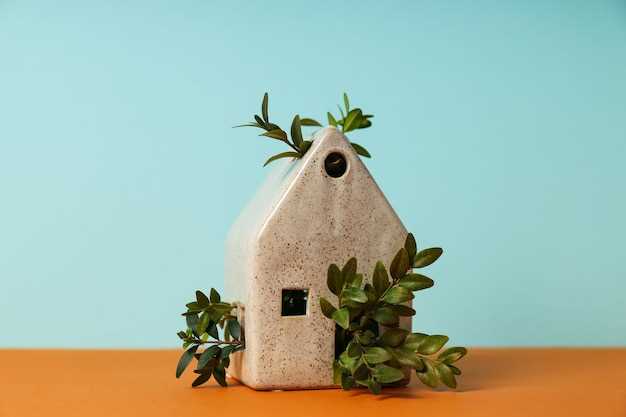Sustainable Materials Every New Build Should Consider
May 20, 2025

Consider bamboo as an immediate option for eco-friendly construction. Bamboo grows remarkably fast, reaching maturity within just three to five years, unlike traditional timber which can take decades. This rapid growth cycle means bamboo can be harvested frequently without depleting resources, making it an ideal choice for sustainable building. Additionally, bamboo’s tensile strength is comparable to steel, making it not only sustainable but also robust and reliable.
Shift attention towards recycled steel, another strong contender for sustainable construction. Recycled steel reduces the need for mining, conserves resources, and significantly cuts down on the carbon footprint associated with steel production. Using recycled steel in construction translates to an impressive reduction in CO2 emissions, with studies showing a potential decrease of up to 50%. It offers the durability required for vital structural components while aligning with eco-conscious objectives.
Straw bales, though unconventional, offer surprising benefits as insulation materials. They are highly effective in maintaining indoor temperature, reducing the need for extensive heating or cooling. Straw bales come from renewable resources and contribute to excellent air quality due to their natural composition, providing builders with a sustainable option that enhances energy efficiency.
Rammed earth presents another opportunity for sustainable building. This material is created by compacting a damp mix of earth, which naturally varies by location, allowing for local material utilization with minimal transport costs and environmental impact. Rammed earth walls exude a striking aesthetic while providing excellent thermal mass, reducing energy needs for heating and cooling. Furthermore, it offers longevity and robustness akin to conventional materials such as brick and block.
Finally, consider implementing cross-laminated timber (CLT). This innovative product combines sustainability with structural integrity. CLT panels are manufactured using layers of timber glued at perpendicular angles, creating a product that can replace concrete slabs in certain applications. The production process also ensures that wood that might otherwise be wasted is used efficiently, maximizing resource utilization while providing a warm, natural aesthetic.
Integrating Renewable Resources Into Home Design

Focus on solar energy by installing photovoltaic panels that convert sunlight into electricity. Opt for south-facing roofs to maximize exposure and energy yield. Complement this with a solar thermal system for water heating, reducing reliance on gas or electric water heaters.
Choose sustainably sourced timber for construction, which not only reduces carbon footprint but also provides excellent insulation. Consider bamboo for flooring due to its rapid regrowth and durability. Ensure all wood is certified by the Forest Stewardship Council (FSC) for environmental responsibility.
Incorporate rainwater harvesting systems to reduce the demand for treated water. Collect and store rainwater using tanks, which can be used for irrigation, toilet flushing, and laundry. This system decreases utility bills and conserves natural resources.
Enhance home design with geothermal heating and cooling solutions. Use a ground-source heat pump to efficiently regulate indoor temperature by utilizing the earth’s constant temperature, offering significant long-term savings.
| Material | Benefits | Application |
|---|---|---|
| Solar Panels | Reduces electricity bills, lowers carbon emissions | Roof installation |
| Sustainable Timber | Natural insulation, eco-friendly | Construction, interior finishes |
| Rainwater Harvesting | Conserves water, reduces utility costs | Irrigation, non-potable usage |
| Geothermal Systems | Efficient heating/cooling, cost-effective | Temperature regulation |
Utilize passive solar design techniques such as strategic window placement to maximize natural light and heat during colder months while minimizing heat gain in summer. Incorporate double- or triple-glazed windows to enhance energy efficiency.
Exploring the Benefits of Bamboo Flooring
Consider bamboo flooring for your next build because it offers a unique blend of durability and eco-friendliness. As a rapidly renewable resource, bamboo grows back quickly, making it an environmentally responsible choice. With a growth rate of up to three feet per day, bamboo regenerates without needing to be replanted, minimizing soil disturbance.
Bamboo scores high on the Janka hardness scale, rivaling traditional hardwoods like oak and maple. This means you’ll have flooring that withstands heavy foot traffic and daily wear, which is perfect for busy households or commercial spaces. Additionally, bamboo’s natural resistance to moisture and insects enhances its longevity, making it suitable for a variety of climates and settings.
Enhance your design flexibility with bamboo’s wide range of colors and textures. From light, natural hues to deep, rich stains, bamboo can match virtually any interior aesthetic. The variety of plank sizes and finishes available lets you customize your space with ease.
Installation of bamboo flooring is relatively straightforward, with floating, gluing, or nailing options available depending on subfloor materials and personal preference. Many producers also offer pre-finished planks, reducing installation time and ensuring consistent results.
Investing in bamboo flooring often yields cost savings both upfront and long-term. Its competitive price point is attractive compared to many traditional hardwood options, and its resilience means less frequent replacements are needed. Plus, maintaining bamboo typically requires only regular sweeping and occasional damp mopping, saving time and effort on upkeep.
How Reclaimed Wood Can Add Character and Reduce Waste
Integrate reclaimed wood into your new build for a unique aesthetic and sustainable edge. Choosing salvaged timber from old barns, factories, or warehouses gives your space a distinct look with its rich color variations and historic patina. Every piece tells a story, transforming walls, floors, or ceilings into focal points with rustic charm.
Maximize environmental benefits by sourcing reclaimed wood locally, minimizing transportation emissions. This approach not only conserves natural resources but also reduces landfill waste, as wood intended for disposal gains renewed purpose. Ensure the wood is free from pests and properly treated, preserving its integrity and longevity.
Embrace versatility by utilizing reclaimed wood in diverse applications. Install it as paneling for accent walls or craft it into bespoke furniture pieces, adding character without compromising on functionality. Its durability makes it suitable for high-traffic areas, offering both resilience and beauty.
Choosing reclaimed wood supports sustainable building practices and aligns with eco-friendly goals by contributing to a circular economy. Evaluate certifications and sources to ensure ethical procurement, enhancing both your build’s character and environmental responsibility.
Choosing Recycled Metal for Structural Strength and Aesthetics
Opt for recycled metal as a sustainable choice to enhance both structural integrity and visual appeal in new constructions. Its robust properties not only ensure durability but also promote eco-friendly building practices.
- Durability: Recycled metals, such as steel and aluminum, maintain their original strength through multiple recycling processes. They offer longevity and require less maintenance compared to traditional materials.
- Cost-Effectiveness: Using recycled metal can reduce material costs, as recycled options are often cheaper than newly mined metals. This allows for significant savings without compromising quality.
- Environmentally Friendly: The production of recycled metal uses significantly less energy, reducing greenhouse gas emissions. Choosing recycled options supports waste reduction in landfills and conserves natural resources.
- Design Flexibility: Recycled metals are versatile and can be tailored to various architectural styles, from sleek modern buildings to more classic designs. They can be molded, welded, and shaped into complex structures, offering extensive design possibilities.
- Thermal Performance: Metal roofs and facades made from recycled materials can enhance a building’s energy efficiency by reflecting solar heat, contributing to lower energy consumption for temperature regulation.
Adopting recycled metal lays the groundwork for a more sustainable future in construction while delivering superior strength and aesthetic versatility. Consider this choice to drive innovation in building projects and minimize environmental impact.
Sourcing Local Materials to Minimize Transportation Impact
Choose materials from local suppliers and manufacturers, as this decision directly reduces the carbon footprint associated with long-distance transportation. Not only does this support the regional economy, but it also ensures that less energy is consumed in the delivery process. For example, sourcing bricks, timber, and stone from within a 100-mile radius significantly cuts down on greenhouse gas emissions.
Consider establishing a partnership with local producers who are engaged in sustainable practices. This ensures that you receive high-quality materials while also promoting environmentally-friendly operations. Verify their certifications in sustainability to confirm their commitment to reducing environmental impact.
Engage with local communities to discover unique materials that may not be widely known but offer great durability and aesthetic appeal. For instance, some regions have traditional techniques using renewable resources that marry well with modern building requirements. Utilizing these materials adds a distinct regional flavor to new builds and preserves cultural heritage.
Analyze the full lifecycle of each material sourced to understand its environmental implications beyond transportation. By considering elements like production methods and waste generation, you can choose options that align with long-term sustainability goals.
Finally, leverage local knowledge to explore innovative materials that might not be available through larger distribution networks. These materials often come with the added benefit of shorter lead times and better adaptability to local climate conditions, further enhancing the sustainability of your project.
Innovative Eco-Friendly Insulation Options

Opt for sheep’s wool insulation to boost energy efficiency and sustainability. Sheep’s wool naturally regulates humidity, offers excellent thermal and acoustic properties, and even purifies the air by absorbing toxins. This renewable resource also biodegrades, minimizing environmental impact.
- Cork Insulation: Ideal for walls and roofs, cork provides high thermal performance. It’s harvested from the bark of cork oak trees without harming the tree, promoting biodiversity and carbon sequestration.
- Recycled Cotton: Made from recycled denim, this insulation option reduces textile waste. It’s non-toxic, has superior sound absorption qualities, and is easy to install.
- Cellulose Insulation: Comprising mostly recycled paper material, cellulose is treated with non-toxic fire retardants offering an eco-friendly and energy-efficient alternative. It fits snugly around building gaps, reducing air infiltration.
- Hemp Insulation: Known for its durability and resistance to pests and mold, hemp is a carbon-negative material. This means it absorbs more CO2 during growth than it emits, contributing positively to the environment.
Choose these eco-friendly insulation materials not only for their phenomenal performance but also for their sustainable contribution to a greener planet.
Utilizing Hemp for Thermal and Acoustic Insulation
Choose hemp for your insulation needs to enhance both energy efficiency and soundproofing in new builds. Hemp fiber’s natural properties excel in maintaining indoor temperatures due to its high thermal mass and low conductivity. This means reduced energy consumption, leading to lower utility bills. Additionally, hemp’s porous structure effectively dampens noise, creating a quieter indoor environment.
Hemp’s fire-resistant nature adds an extra layer of safety, thanks to its ability to char instead of ignite. It’s also chemical-free, ensuring a healthier indoor air quality. Moreover, its ability to regulate humidity by absorbing moisture makes it an excellent choice in varying climates.
Invest in hemp insulation to support sustainability without sacrificing performance. Hemp grows quickly and requires fewer resources, making it a renewable solution. By choosing hemp, you contribute to a reduced carbon footprint while enjoying superior insulation.
| Feature | Benefit |
|---|---|
| Thermal Mass | Keeps interiors warmer in winter and cooler in summer |
| Acoustic Properties | Reduces sound transmission between rooms |
| Fire Resistance | Enhances safety by charring instead of burning |
| Humidity Regulation | Minimizes mold and allergens by maintaining ideal moisture levels |
| Sustainability | Fast-growing, low-resource crop with a small carbon footprint |
The Rise of Cork: A Sustainable Insulation Choice
Consider choosing cork as your insulation material for its impressive environmental benefits and outstanding properties. Cork is harvested from the bark of cork oak trees, which grow predominantly in the Mediterranean region. This renewable resource is not only biodegradable but also supports the natural biodiversity of the forests where it is sourced. By selecting cork, you contribute to the preservation of these ecosystems.
- Thermal Efficiency: Cork offers excellent thermal insulation, keeping your building warm in the winter and cool in the summer. Its natural cellular structure traps air, providing an effective barrier against temperature changes.
- Moisture Resistance: Unlike many traditional insulation materials, cork is naturally resistant to moisture and mold growth. This property reduces the risk of damage and health issues related to damp conditions in buildings.
- Durability: Cork maintains its structural integrity over time. It does not degrade or lose its properties, ensuring a long lifespan for your insulation investment.
- Acoustic Insulation: The unique composition of cork makes it an excellent sound insulator. It minimizes noise pollution, creating a more peaceful indoor environment.
- Fire Resistance: Cork is a fire-retardant material. It burns without releasing toxic gases, adding an extra layer of safety to your building.
For ease of installation, cork insulation is available in various forms, such as boards or rolls, adaptively fitting different construction needs. Its lightweight nature simplifies handling and application, reducing labor costs. By incorporating cork insulation in your building projects, you not only enhance energy efficiency but also support sustainable practices that benefit both the environment and future generations.
The Pros and Cons of Sheep’s Wool Insulation
Start by considering sheep’s wool insulation for its excellent thermal properties. It effectively regulates indoor temperatures, maintaining warmth in winter and coolness in summer. This natural fiber has a low embodied energy, making it an environmentally friendly option. Its ability to absorb and release moisture efficiently without compromising its insulating capability sets it apart from other materials.
Being naturally fire-resistant, sheep’s wool enhances safety without the need for chemical treatments. Furthermore, it offers excellent sound insulation, creating quieter and more comfortable living spaces. Biodegradability is another key advantage. Unlike synthetic counterparts, wool decomposes naturally, reducing landfill impacts.
However, consider the drawbacks, primarily cost. Sheep’s wool insulation is often more expensive than conventional materials. Additionally, there might be concerns about effective pest control. Although treated with natural repellents, it may attract moths or rodents if improperly maintained.
In summary, while sheep’s wool insulation presents upfront costs, its sustainability and performance benefits can outweigh initial investments, offering long-term value and environmental benefits for any new build.
Considering Aerogel for Ultimate Insulation Performance
Choose aerogel for an extraordinary insulation solution. Known for its high thermal resistance, aerogel proves to be a remarkable insulator, maintaining a thermal conductivity as low as 0.012 W/m·K. This makes it three times more insulating than traditional materials like fiberglass or foam. With such powerful capabilities, aerogel minimizes energy consumption for heating and cooling, significantly reducing utility bills. Its hydrophobic properties prevent moisture absorption, thereby resisting mold and mildew, which is perfect for maintaining a healthy indoor environment.
Apply aerogel in various areas of a building, from walls and roofs to windows and piping, without compromising structural integrity. It is lightweight, adding minimal load despite its robust properties. Builders appreciate its flexibility, as it can be cut into different shapes and sizes, ensuring a custom fit for every design need. While the initial investment may seem significant, the long-term savings and durability justify the choice, making aerogel a top consideration for sustainable construction projects.
Q&A:

What are some sustainable materials that can be used in new building projects?
Some of the sustainable materials that can be considered for new building projects include bamboo, recycled steel, and reclaimed wood. Bamboo is a fast-growing plant that can be harvested without causing long-term damage to the environment. Recycled steel reduces the need for new steel production, which in turn decreases energy consumption and greenhouse gas emissions. Reclaimed wood is sourced from old buildings and repurposed for new construction, reducing the demand for new timber and preserving forests.
How does using recycled materials in construction benefit the environment?
Using recycled materials in construction helps reduce the demand for raw materials, which in turn decreases habitat destruction and conserves energy. For example, manufacturing new steel from recycled sources uses significantly less energy compared to producing steel from iron ore. This reduction in energy consumption helps lower carbon emissions, contributing to the fight against climate change. Additionally, diverting materials from landfills reduces waste and environmental pollution.
Is bamboo a durable option for building structures, and does it require any special treatment?
Bamboo is incredibly strong and has been used in construction for thousands of years, making it a durable option for building structures. However, it does require special treatment to prevent issues such as mold, insects, and rot. Proper curing and treatment processes can enhance its durability, allowing it to be used safely in various structural applications. Builders often treat bamboo with borates and other natural substances to extend its lifespan while keeping it environmentally friendly.
What role does concrete play in sustainable construction, and are there eco-friendly alternatives?
Concrete is one of the most widely used materials in construction due to its strength and versatility. However, its production is energy-intensive and contributes significantly to CO2 emissions. Sustainable construction seeks to minimize these impacts by using alternatives such as recycled concrete, which incorporates demolished material, and green concrete that uses industrial by-products like fly ash or slag instead of traditional Portland cement. These alternatives can effectively reduce the environmental footprint of concrete in building projects.
Can the use of sustainable materials affect the cost of construction?
The cost of using sustainable materials can vary. Initially, some sustainable materials might be more expensive due to specialized sourcing and processing. However, these materials often lead to long-term cost savings through enhanced durability, energy efficiency, and reduced maintenance needs. For instance, although the upfront cost of recycled steel or energy-efficient windows might be higher, they can significantly reduce operational costs over time, resulting in overall financial savings for building owners.
What are some examples of sustainable materials that should be prioritized in new builds?
There are several sustainable materials that are gaining attention in the construction industry, including bamboo, reclaimed wood, and recycled steel. Bamboo is highly renewable and grows much faster than traditional timber. Reclaimed wood reduces the demand for newly sourced lumber, minimizing deforestation, and recycled steel uses considerably less energy compared to producing new steel. Each of these options helps minimize the environmental impact of new constructions while offering durability and aesthetic appeal.
How can using sustainable materials in construction benefit both the environment and homeowners?
Using sustainable materials in building projects offers significant advantages for both the environment and homeowners. Environmentally, it reduces the carbon footprint of new constructions and promotes resource conservation. Sustainable materials often require less energy for production and have a longer lifespan, meaning fewer resources are needed over time. For homeowners, these materials can lead to lower energy costs due to better insulation and reduced maintenance expenses. Additionally, homes built with eco-friendly materials often have higher resale values, making them a smart long-term investment.